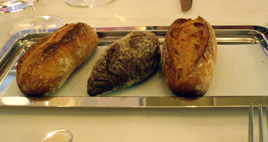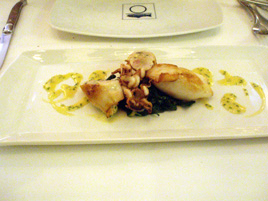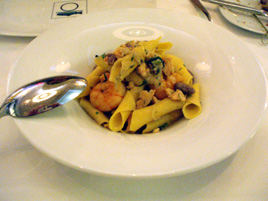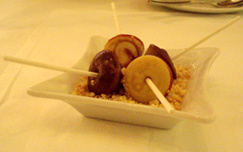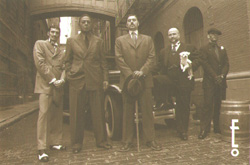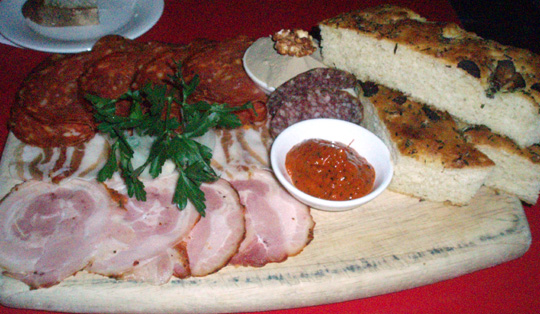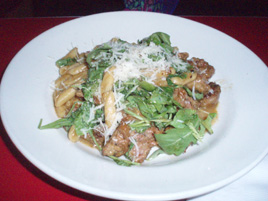Deathwatch Deconstructed: Shang
 Thursday, October 8, 2009 at 02:29PM
Thursday, October 8, 2009 at 02:29PM Note: It took two years longer than anyone expected, but Shang finally bit the dust in October 2011.
*
 This week, our friends at Eater.com put Shang on Deathwatch. It was the first Deathwatch announcement in many moons, as Eater had suspended the feature during the recession. No one is sure if the recession is still going, but Deathwatch is back in business.
This week, our friends at Eater.com put Shang on Deathwatch. It was the first Deathwatch announcement in many moons, as Eater had suspended the feature during the recession. No one is sure if the recession is still going, but Deathwatch is back in business.
I thought that the suspension was a mistake. Deathwatch does not celebrate failure; when correctly done, it merely proclaims the inevitable. There have been a few notable mistakes, most notably when the team DW’d Degustation, Jack’s Luxury Oyster Bar, and Jewel Bako on the same day, two years go. All three are still open.
But generally, Deathwatch has been an accurate harbinger of impending restaurant death.
From now on, with due apologies to Eater, we’ll diagnose each patient that checks into the hospice. First, Why Are They Here? Then, How Did It Happen? Lastly, Can It Be Saved? Our first case: Shang.
Why Are They Here?
Shang is a ghost town. Any night of the week, almost any time you want, there are reservations on OpenTable. On most nights, even a prime time table carries a 1,000-point bonus. That basically means they are paying you to eat there.
The restaurant is adding a sushi and dim sum menu. This is capitulation. Sushi has nothing to do with Susur Lee’s cuisine. It is just a gambit to put more bums in his restaurant’s empty seats.
How Did It Happen?
Susur Lee is Toronto’s most celebrated chef. But Shang was a dumbed-down à la carte version of Susur, his accaimed prix fixe restaurant that featured a reverse tasting menu. It was a major mistake to open in New York with anything less than his best.
The PR plan was flawed, as nobody was sure until the last minute whether Shang was supposed to be a transfer of Susur, or a brand new idea. The reverse tasting menu had made him an international star. When it finally became clear that it wouldn’t be offered in New York, Shang’s balloon lost its air quickly.
Success elsewhere is a notoriously poor predictor of success in New York. With the exception of Thomas Keller at Per Se, the chefs who’ve done it are those who move here for good. Lee was splitting his time between Toronto (where he still has a restaurant) and New York. If you want to make it here, you have to jump in with both feet.
We liked the cuisine at Shang, but it was nothing we would rush back for. Most of the big-name critics found it passé—a brand of Asian fusion that is no longer popular. One wag pointed out that when your best known dish is a salad (the “Singapore Slaw”), you’re probably in trouble.
It also didn’t help that Shang was in a hotel, and was therefore buffeted by all of the problems that often beset hotel restaurants (a circuitous entrance, poorly located restrooms, a bar under someone else’s control). The ill-judged décor was aimed more at hipsters with poor attention spans than serious diners.
We are always unsure whether reviews actually influence people, or if they just memorialize what the public had already decided for itself. But a paltry, unenthusiastic one-star review from Frank Bruni cannot have helped.
Can It Be Saved?
Probably not. The hipsters have long sinced moved on, and serious diners are still wondering why they weren’t offered the reverse tasting menu. We are not privy to any inside information, but we suspect that Lee is already back in Toronto, leaving the restaurant to run on auto-pilot and sell mediocre sushi.
 Shang,
Shang,  Susur Lee in
Susur Lee in  Deathwatch Deconstructed
Deathwatch Deconstructed 



